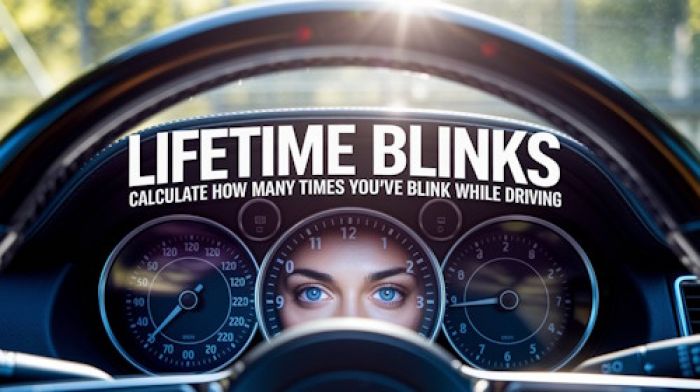Have you just bought a new car or a used engine? Maybe you are starting a fresh new project and you want to know what upgrades would be the best fit for your engine? Perhaps you are trying to figure out if something has already been swapped out by the last owner?
If that's the case, you just need to have a closer look at what you've got. Mainly, there are certain numbers printed on the parts of the engine that can help you to precisely identify what you have on your hands. The above-mentioned numbers can be summed up as date codes, suffix stampings, and casting numbers of the engine.
Engine replacement problems highlights
- Level of urgency:High
- DIY inspection:Impossible
- DIY repair:Impossible
- Cost of repair:$3,000 - $6,500
- Can you drive?No
- Commonreasons:Fatal engine failure, timing belt/chain jumping, overheating, poor lubrication
- Ways to fix:Professional engine replacement
Even with those numbers in correct check people sometimes still misjudge the engine because Chevrolet kept recycling the suffix codes throughout the decades, so it might get confusing at times.
To start off, you should want to check for the two sets of numbers that are of the utmost importance to us - Engine ID Code and Engine Casting Number. The block casting numbers are located at the rear of the block, usually on the driver's side but in later models, it can also be found on the passenger's side.
The number can vary in digits, there can be five, seven, or even eight numeral digits representing the number. The block can also contain some individual letters but they are not considered to be a part of the casting number, so, don't worry yourself about those.
You may also see something like "5.7" (350) or "5.0" (305) which represent the size of the motor calculated in liters. The casting number will also show whether you have a two or a four-bolt main cap, as well as the application year in most cases. Moving on, the next step would be to check for the Engine ID code.
Unlike the casting number, it won't be as easy to find but it's usually located on a flat pad in front of the cylinder head. More often than not, due to lots of oil and dirt accumulating over the years the number can be somewhat vague and unclear. However, the Engine ID code will in itself contain the suffix and the prefix code.
After you've found the suffix code it gets easier! By knowing the suffix code, you will now be able to figure out the exact horsepower, original assembly line, engine RPO, transmission, and other valuable information about your engine that you can find by researching the code in a Chevy database.
There are various forms of databases that you can easily find, and that range from compiled PDF books to online sites depending on your taste and preference. Assuming that you do have a ZZ4, your crate engine will most likely be marked with an M-code which stands for "Hecho en Mexico".
The easiest way is to look for some sort of icon or a sticker on the pan or an oil cap that has "ZZ4" initials on it. Furthermore, ZZ4 blocks are usually painted black and they have black valve covers with retaining bolts along the cover center, which differs from other earlier examples.
It's also important to note that the ZZ4's factory-made didn't have fuel pumps, starters, or carbs. Although you might already have a pretty good idea of what you're dealing with it's always better to make sure! A simple guideline to follow while looking at the engine code digits can be helpful. The first letter shows the location (geographical) where the engine was put together.
Secondly, the ones that are right next to them represent the exact and specific assembly date. The last couple of numbers represent the suffix code. The location of the code can also vary by the engine type.
For example, on the big block Chevy, the code is located on the passenger side, it can be found in front of the cylinder head or in some cases above the timing chain cover, while on the small block Chevy it's usually right in front of the cylinder head on the passenger side.
As we've already mentioned the prefix of the engine ID code represents the engine assembly plant code, and the original engine installment date, while the suffix shows you the vehicle model, engine RPO, transmission, etc. It is important to note, however, that the assembly date should always antecede the car build date.
Lastly, to be absolutely sure you should check the partial VIN number. The partial VIN number is also of high importance, if not the most important piece of information. In the older models, the partial VIN number is usually located somewhere beneath, or near the engine code, the letters and digits are most often than not smaller in font than the ones of the engine code.
However, on the models after the 1970s, the partial VIN number can most often not be found printed above the oil filter or even on the transmission flange. After you have found the VIN number you will be able to denote all of the following information: model year, assembly plant designation, sequence number, and divisional identification number.
However, all of this information can be a bit overbearing, but you should always keep in mind that the most important pieces of guidance will always be given by the Partial VIN and the Engine Code ID. After you've found those two numbers everything else should fall into place as soon as you find the desired database and check the codes!
The best idea of what you are working with can be nailed down with the numbers matching. It is a process in which you can determine if the engine or some other component matches the car/truck that it was originally produced for. For this match, we need the above-mentioned partial VIN engine number as it will most surely match the VIN of the vehicle.
The numbers need to be exactly the same, if not it's not a match. In some cases, the partial VIN can be re-stamped and, in this case, you can't really do much about it, but those cases are extremely rare.
By now you should have most likely been able to identify what you're dealing with. If you followed the tips and checked every number reviewed in the article, you shouldn't have much trouble figuring this out! Remember that you can always visit your local car mechanic and ask for their opinion.
About the authors
The CarAraC research team is composed of seasoned auto mechanics and automotive industry professionals, including individuals with advanced degrees and certifications in their field. Our team members boast prestigious credentials, reflecting their extensive knowledge and skills. These qualifications include: IMI: Institute of the Motor Industry, ASE-Certified Master Automobile Technicians; Coventry University, Graduate of MA in Automotive Journalism; Politecnico di Torino, Italy, MS Automotive Engineering; Ss. Cyril and Methodius University in Skopje, Mechanical University in Skopje; TOC Automotive College; DHA Suffa University, Department of Mechanical Engineering






Add comment